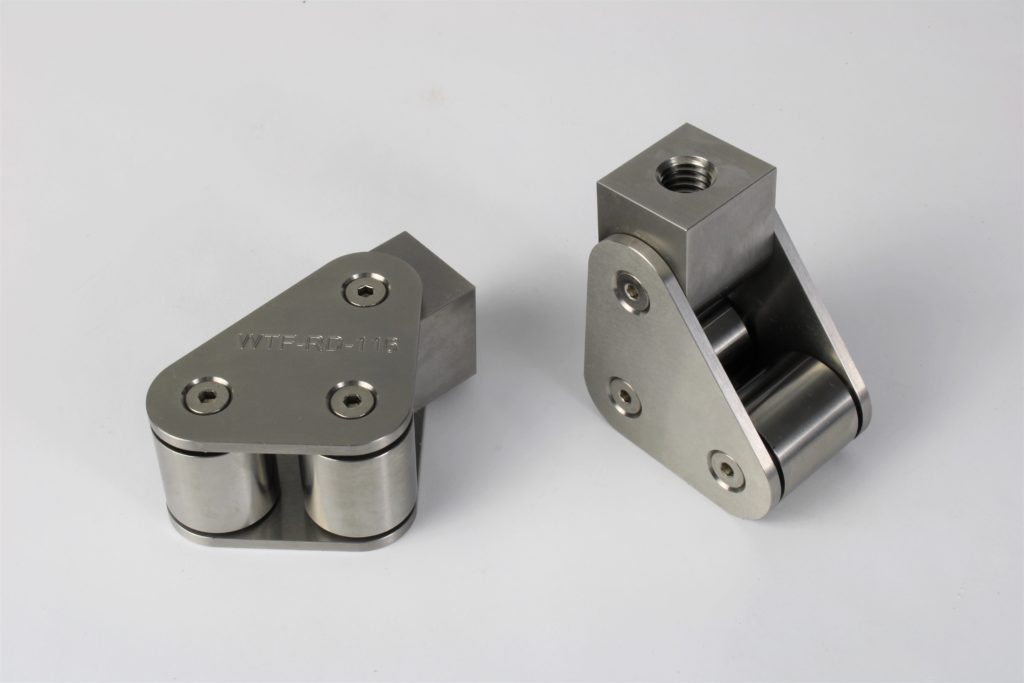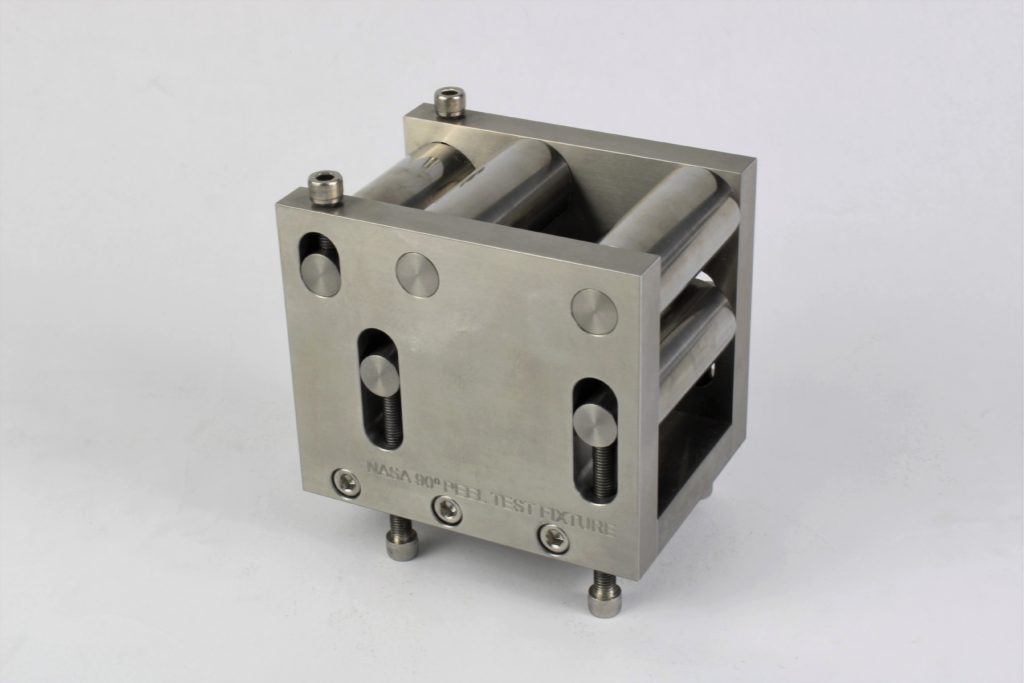Peel Testing
A variety of standardized test methods have been developed to evaluate the mechanical performance of adhesives and adhesive bonded joints through peeling.
I-1:Climbing Drum Peel Test Fixture
ASTM D1781
First standardized by ASTM in 1960, the Climbing Drum Peel test measures the adhesive bond between the core material and the facesheet of a sandwich panel. The facesheet is wound onto the drum as the drum climbs up the facesheet under the applied axial tensile loading. An optional steel backing plate to prevent buckling when testing a solid laminate is available.
I-2:Roller Drum Peel Test Fixture
ASTM D3167
An alternative to the Climbing Drum Peel when testing the adhesive peel strength between two adhesively bonded solid sheets, the Roller Drum Peel test method dictates a significantly smaller specimen and a smaller fixture. However, since the angle of peel is greater, the Roller Drum Peel test is a more severe test than the Climbing Drum Peel test; results should not be directly compared.
As the name implies, the NASA 90-Degree Peel Test maintains a constant 90-degree peel angle. The two lower rollers are also adjustable to accommodate specimens of different total thickness, constraining the specimen to remain horizontal. Both honeycomb sandwich panels and flexible face sheet with a more rigid substrate can be tested. Face sheet thicknesses less than 0.010” are recommended.
I-4:Prepreg Tack Test Fixture
ASTM D8336
This recently standardized (2021) test method focuses on the measurement of surface adhesion, or “tack,” of partially-cured (B-staged) thermoset composite prepreg.





